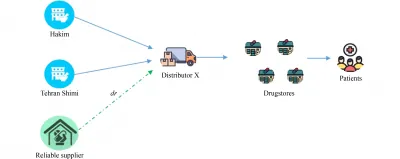
Revolutionizing Diabetic Drug Access: Unveiling the Impact of Pricing Strategies Amid Supply Risks
2025-09-18
Author: Arjun
In a world increasingly burdened by public health crises and unpredictable supply chains, ensuring the stability and efficiency of pharmaceutical supply chains (PSCs) has emerged as a top priority. This is particularly crucial for essential medications for chronic conditions like diabetes, where patients depend on consistent access to treatments to manage their blood glucose levels.
Supply disruptions can stem from a multitude of factors, including natural disasters, pandemics, or supplier unreliability, posing serious threats to drug availability, patient safety, and overall social welfare. Yet, there is a critical gap in research regarding optimal pricing strategies and the enhancement of social welfare within diabetic pharmaceutical supply chains facing such risks.
A groundbreaking study, "Optimal Pricing Strategies and Social Welfare of a Diabetic Pharmaceutical Supply Chain under Supply Disruption Risk," spearheaded by a team from the University of Tehran, University of East Anglia, and Amirkabir University of Technology, seeks to fill this gap.
This research dives into a complex three-tier diabetic pharmaceutical supply chain in Iran, which includes two main suppliers of essential diabetic medications, a backup supplier triggered during disruptions, a distributor, and various pharmacies. Through advanced mathematical modeling and rigorous analysis of real-world data spanning 2018 to 2021, the study investigates how risks of supply disruption influence pricing strategies across different power dynamics—Supplier–Stackelberg (SS), Drugstore–Stackelberg (DRS), and Centralized Setting (CS).
Key Findings That Could Transform Diabetes Management!
The findings paint a fascinating picture of the optimal structures for managing diabetic drug supply chains. The study reveals that the Centralized Setting (CS) shines when there’s a need for tight procurement and distribution control, particularly in high-cost, high-risk scenarios. This model consistently outperforms decentralized options, leading to superior profits across the supply chain.
Conversely, under conditions of low to moderate procurement costs, the Drugstore–Stackelberg (DRS) model takes the lead in promoting social welfare. Drugstores capitalize on market competition to secure lower prices for consumers, ensuring accessibility while improving overall consumer welfare.
Interestingly, the Supplier–Stackelberg (SS) approach only shows its effectiveness amidst substantial supply disruptions and negligible procurement costs, such as when emergency supplies are subsidized by the government. In typical scenarios, both DRS and CS models provide better consumer benefits, highlighting the inherent conflict in SS, where suppliers often prioritize profit over patient access.
Finally, the research underscores a vital insight: the risk of supply disruptions negatively impacts profits across almost all supply chain actors—except for those backup suppliers—ultimately harming social welfare and consumer surplus. Additionally, factors like market potential and price sensitivity significantly shape optimal pricing, demonstrating that strategic pricing can lead to improved profits and accessibility.
As we navigate the complexities of pharmaceutical supply chains in today’s unpredictable landscape, this research not only highlights the necessity of resilient strategies but also sheds light on pathways to prioritize patient welfare through innovative pricing models.



 Brasil (PT)
Brasil (PT)
 Canada (EN)
Canada (EN)
 Chile (ES)
Chile (ES)
 Česko (CS)
Česko (CS)
 대한민국 (KO)
대한민국 (KO)
 España (ES)
España (ES)
 France (FR)
France (FR)
 Hong Kong (EN)
Hong Kong (EN)
 Italia (IT)
Italia (IT)
 日本 (JA)
日本 (JA)
 Magyarország (HU)
Magyarország (HU)
 Norge (NO)
Norge (NO)
 Polska (PL)
Polska (PL)
 Schweiz (DE)
Schweiz (DE)
 Singapore (EN)
Singapore (EN)
 Sverige (SV)
Sverige (SV)
 Suomi (FI)
Suomi (FI)
 Türkiye (TR)
Türkiye (TR)
 الإمارات العربية المتحدة (AR)
الإمارات العربية المتحدة (AR)